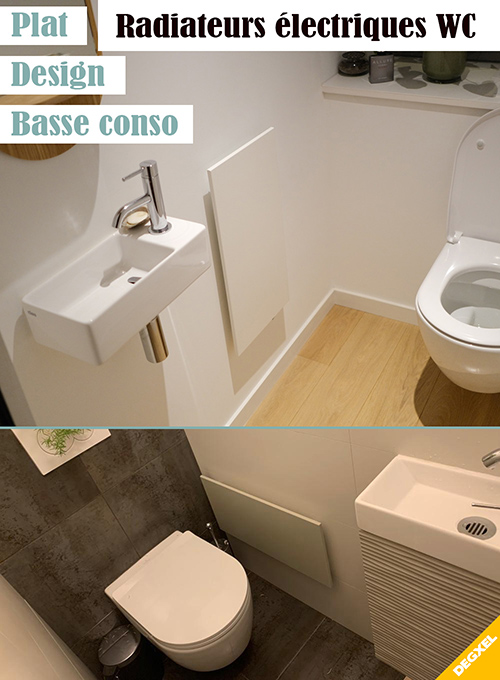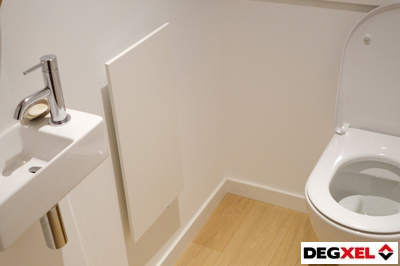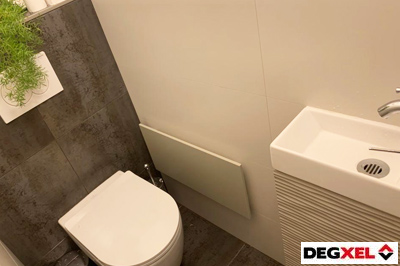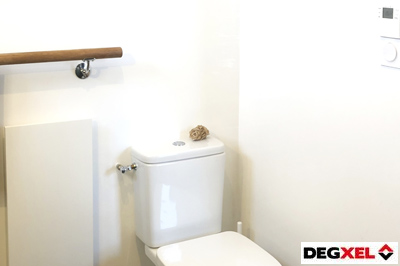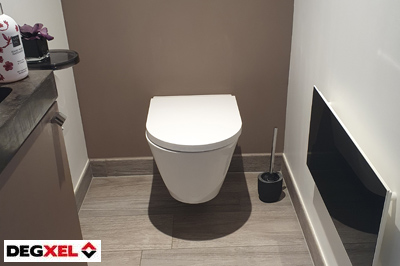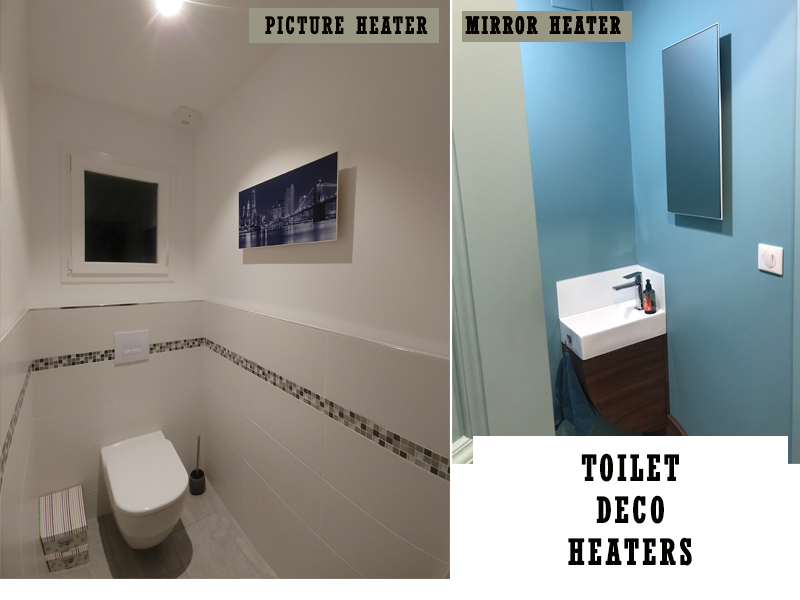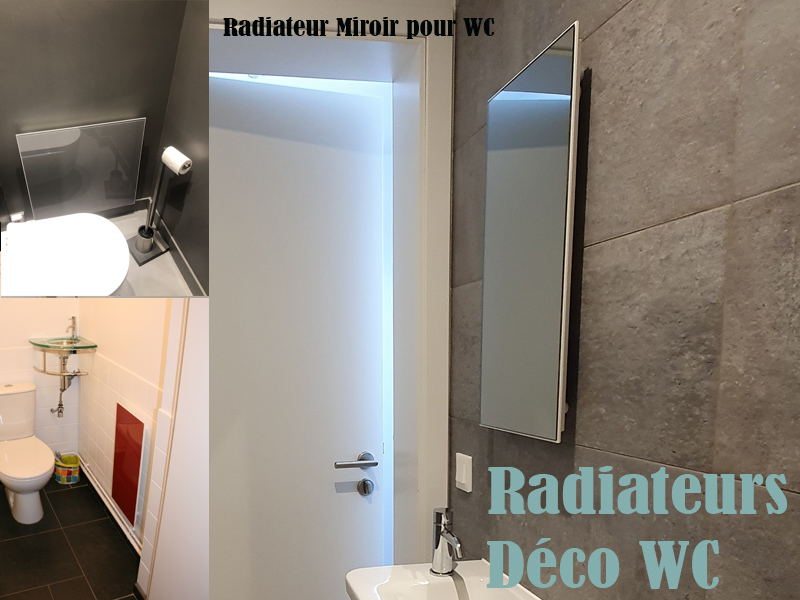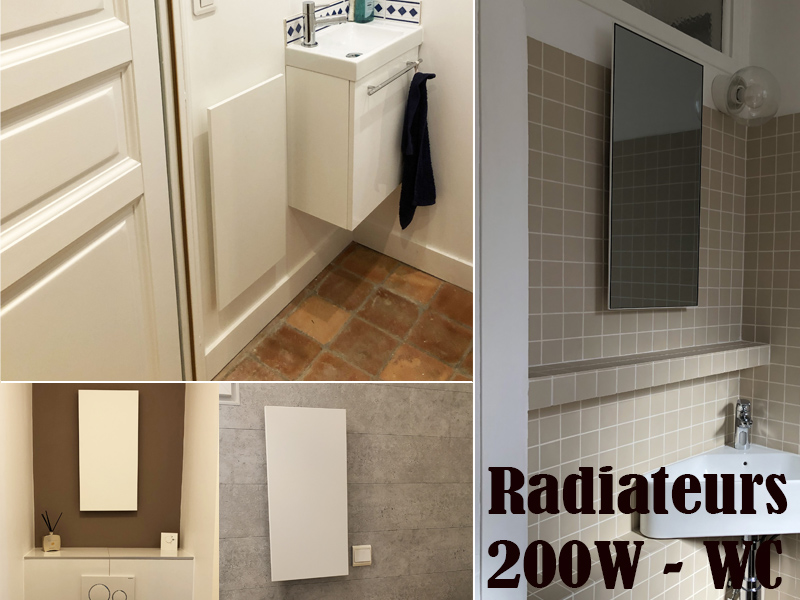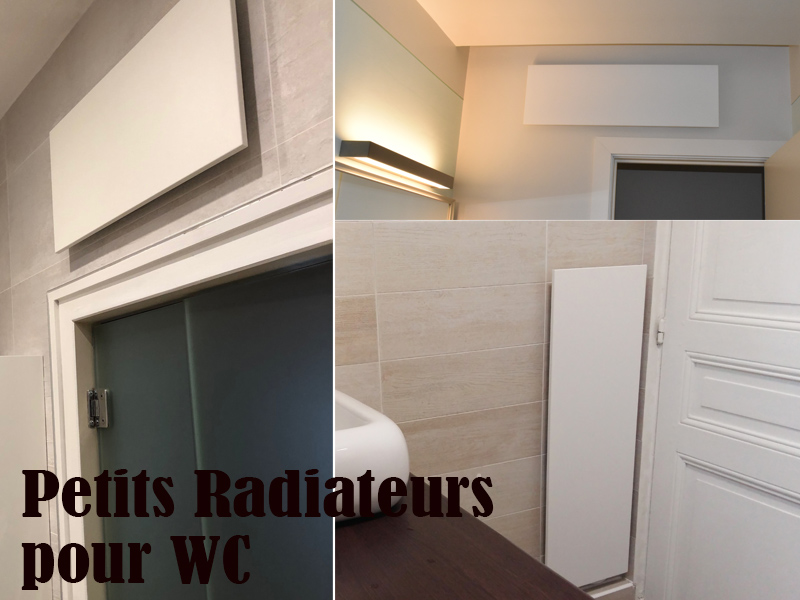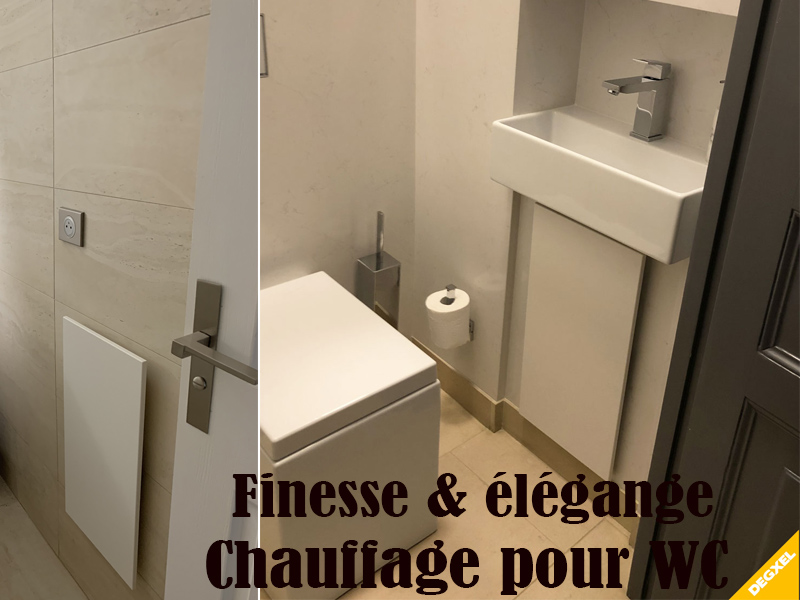Home / Heating / Electric Heating / Infrared Heating / Guide / Which extra-flat electric heater for a toilet? (español – italiano – français)
Choosing a space-saving electric heater for a WC?
Share this page
WC (or toilets) have very specific heating requirements. This is because the space available is often limited and the thermal insulation conditions are sometimes poor. Ventilation that constantly (or occasionally) draws in air amplifies this phenomenon, which leads to an unpleasant feeling of cold.
This article presents a selection of electric heaters that meet this double constraint of design and thermal comfort.
Contents:
- The constraints to be met: very low thickness, compactness, low power consumption, radiant heating technology
- Set a heating capacity adapted to the conditions of the toilet
- Selection of small electric heaters specifically for toilets
- Installation of a small compact heater 200W
The constraints to be met: very low thickness, compactness, low power consumption, radiant heating technology
For a successful heating project in a toilet, the following constraints must be respected:
+ Aesthetic and design constraints:
- an extra flat (thin) electric heater, ideally less than 4 cm thick overall,
- a compact electric heater (small dimensions, narrow width) to meet the difficulties of fitting out,
- a heater to be fixed to the wall (vertically or horizontally) or to the ceiling
+ Power constraint – consumption:
- a low-powered heater that can be connected to any existing power line, even a small-section one. A 16A, 220V power supply with a 1.5 mm² cable will work well for a 200W / 300W / 500W heater.
- a low power heater (less than 500 Watts) to reduce consumption. In electricity, the Watts displayed are those consumed. Most of the time (depending on insulation conditions), a power of 200 Watts to 300 Watts will be sufficient. It is therefore totally unnecessary to install energy-consuming 750W or 1000W electric convectors.
+ Constraint of the heating technology:
- radiant (or infrared) heating is required (or strongly recommended). Indeed, as a toilet is by nature small, an efficient radiant heater (even if imperfectly positioned) will provide quick comfort without the need to heat the air of the whole room. This is particularly important when the ventilation system continuously extracts air…
Set a heating capacity adapted to the conditions of the toilet
+ Oversizing is unnecessary. The «right power» allows you to:
- save living space. If the heater is less powerful, it will be smaller.
- reduce your budget. Less powerful, it will also be less expensive to buy.
– Under-sizing is «risky». The «right power» allows you to:
- maximise the thermal comfort of the occupants.
- provide a useful power reserve in case of exceptional harsh winters or occasional needs.
The power required depends on several parameters including the level of insulation of the WC, its orientation in relation to the sun (N,S,W,E), its surface area and ceiling height, the desired room temperature, the number of cold walls (walls in contact with the outside) and the presence or absence of a ventilation system such as CMV (permanent or occasional).
We recommend a power of 70-80 Watts per m² for a 2.5 meter high toilet with good insulation (and an efficient heater).
Learn more about sizing the right power for an electric heater.
Selection of small electric heaters specifically for toilets (or equivalent rooms)
For a toilet of less than 2 m² we recommend a radiant heater of 200 Watts.
For a toilet of 3-4 m² we recommend a radiant heater of about 300 Watts.
Note: this evaluation corresponds to a properly insulated toilet (at least from 2005) and for the most efficient heaters on the market.
In terms of budget, expect to pay €399 to €499 for premium quality products.
Examples of real projects of narrow (space saving) electric heaters for toilets – Source HeatGood Degxel
Examples of narrow (space-saving) electric heaters for WC – Source HeatGood Degxel
Examples of small extra flat 200W electric heaters for WC – Source Heat4all
Examples of small, extra-flat 300W electric heaters for toilets of 4 to 6 m² – Source Heat4all
Examples of small, slim and elegant electric toilet heaters – Source Degxel
Installation of a small compact 200W electric heater for WC or toilet
Simply install a 200W, 300W or 500W toilet heater. With the help of a wireless thermostat, the control is discreet and all the power supply wires are hidden.
Learn more about heaters and electric heating
Read the article on The best electric heaters?
Expert file: What are the characteristics of the ideal heater?
How to choose an infrared heater: The best infrared heaters
FOX87-EN
